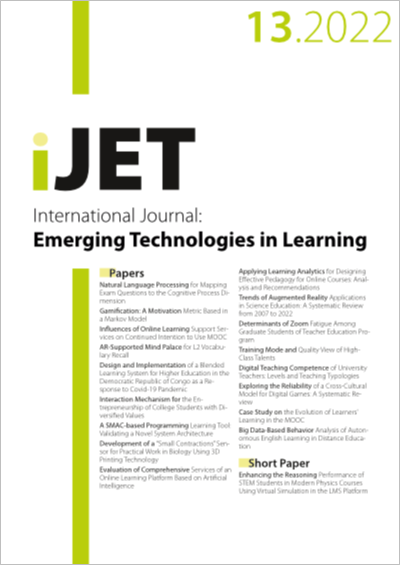Big Data-Based Behavior Analysis of Autonomous English Learning in Distance Education
DOI:
https://doi.org/10.3991/ijet.v17i13.32799Keywords:
distance education, autonomous English learning, big data analysis, attention mechanismAbstract
Distance English education platforms like ABC360 and Rocky English provides a new learning model, which facilitates the autonomous English learning. This study aims to clarify the relationship between learning process and learning efficiency of distance English education, and provide personalized services for distance English teaching. To this end, we carried out a big data analysis on the behavior of autonomous English learning in distance education, in a bid to reveal the learning law and behavior pattern of the learners. Section 2 provides the research strategy for the motivation and behavior of autonomous English learning in distance education, and establishes a research model for such motivation and behavior. Section 3 constructs a behavior analysis model for autonomous English learning in distance education, computes the correlation between the target autonomous learning resources (ALRs) and the series of clicked ALRs, and calculates the probability for autonomous English learners in distance education to click on new resources. The proposed network model can handle a massive amount of learning behavior data, i.e., boast a certain ability to process the big data. The three parts of the model were introduced in details. The effectiveness of the model was demonstrated through experiments.
Downloads
Published
How to Cite
Issue
Section
License
Copyright (c) 2022 Nan Zhang (Submitter); Bing Han

This work is licensed under a Creative Commons Attribution 4.0 International License.



